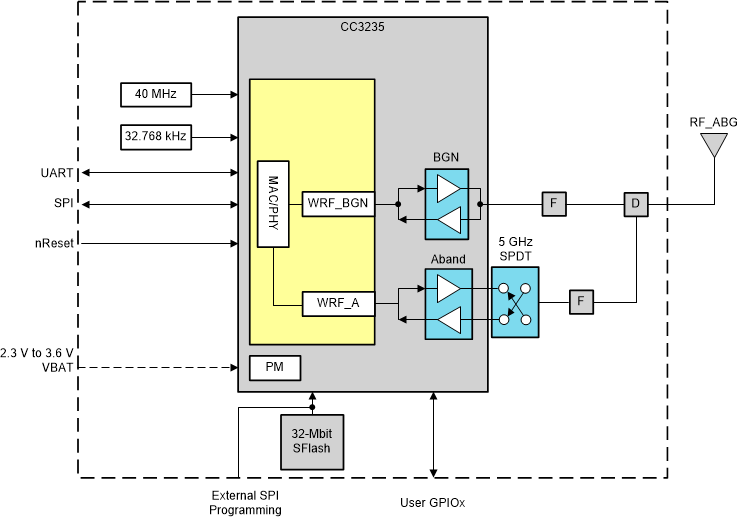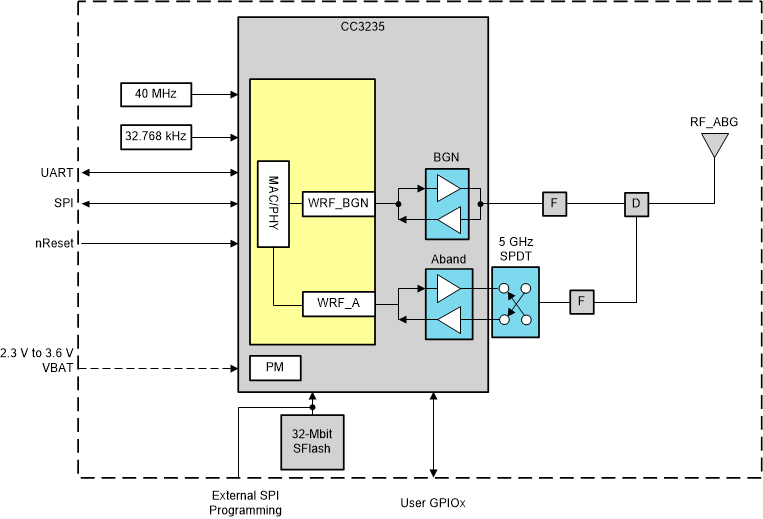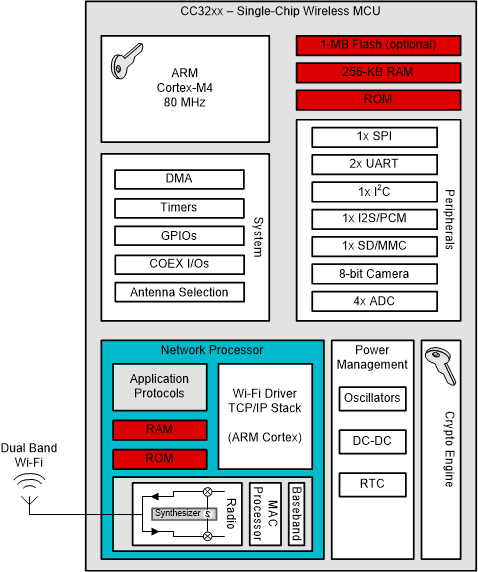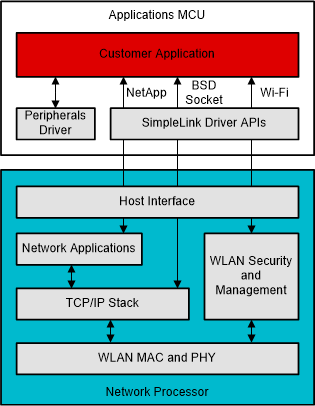JAJSIK6C February 2020 – December 2024 CC3235MODAS , CC3235MODASF , CC3235MODS , CC3235MODSF
PRODUCTION DATA
- 1
- 1 特長
- 2 アプリケーション
- 3 概要
- 4 機能ブロック図
- 5 Device Comparison
- 6 Pin Configuration and Functions
-
7 Specifications
- 7.1 Absolute Maximum Ratings
- 7.2 ESD Ratings
- 7.3 Recommended Operating Conditions
- 7.4 Current Consumption (CC3235MODS and CC3235MODAS)
- 7.5 Current Consumption (CC3235MODSF and CC3235MODASF)
- 7.6 TX Power Control for 2.4 GHz Band
- 7.7 TX Power Control for 5 GHz
- 7.8 Brownout and Blackout Conditions
- 7.9 Electrical Characteristics for GPIO Pins
- 7.10 CC3235MODAx Antenna Characteristics
- 7.11 WLAN Receiver Characteristics
- 7.12 WLAN Transmitter Characteristics
- 7.13 BLE and WLAN Coexistence Requirements
- 7.14 Reset Requirement
- 7.15 Thermal Resistance Characteristics for MOB and MON Packages
- 7.16
Timing and Switching Characteristics
- 7.16.1 Power-Up Sequencing
- 7.16.2 Power-Down Sequencing
- 7.16.3 Device Reset
- 7.16.4 Wake Up From Hibernate Timing
- 7.16.5 Peripherals Timing
-
8 Detailed Description
- 8.1 Overview
- 8.2 Functional Block Diagram
- 8.3 Arm Cortex-M4 Processor Core Subsystem
- 8.4 Wi-Fi Network Processor Subsystem
- 8.5 Security
- 8.6 FIPS 140-2 Level 1 Certification
- 8.7 Power-Management Subsystem
- 8.8 Low-Power Operating Mode
- 8.9 Memory
- 8.10 Restoring Factory Default Configuration
- 8.11 Boot Modes
- 8.12 Hostless Mode
- 8.13 Device Certification and Qualification
- 8.14 Module Markings
- 8.15 End Product Labeling
- 8.16 Manual Information to the End User
- 9 Applications, Implementation, and Layout
- 10Environmental Requirements and SMT Specifications
- 11Device and Documentation Support
- 12Revision History
- 13Mechanical, Packaging, and Orderable Information
パッケージ・オプション
デバイスごとのパッケージ図は、PDF版データシートをご参照ください。
メカニカル・データ(パッケージ|ピン)
- MOB|63



